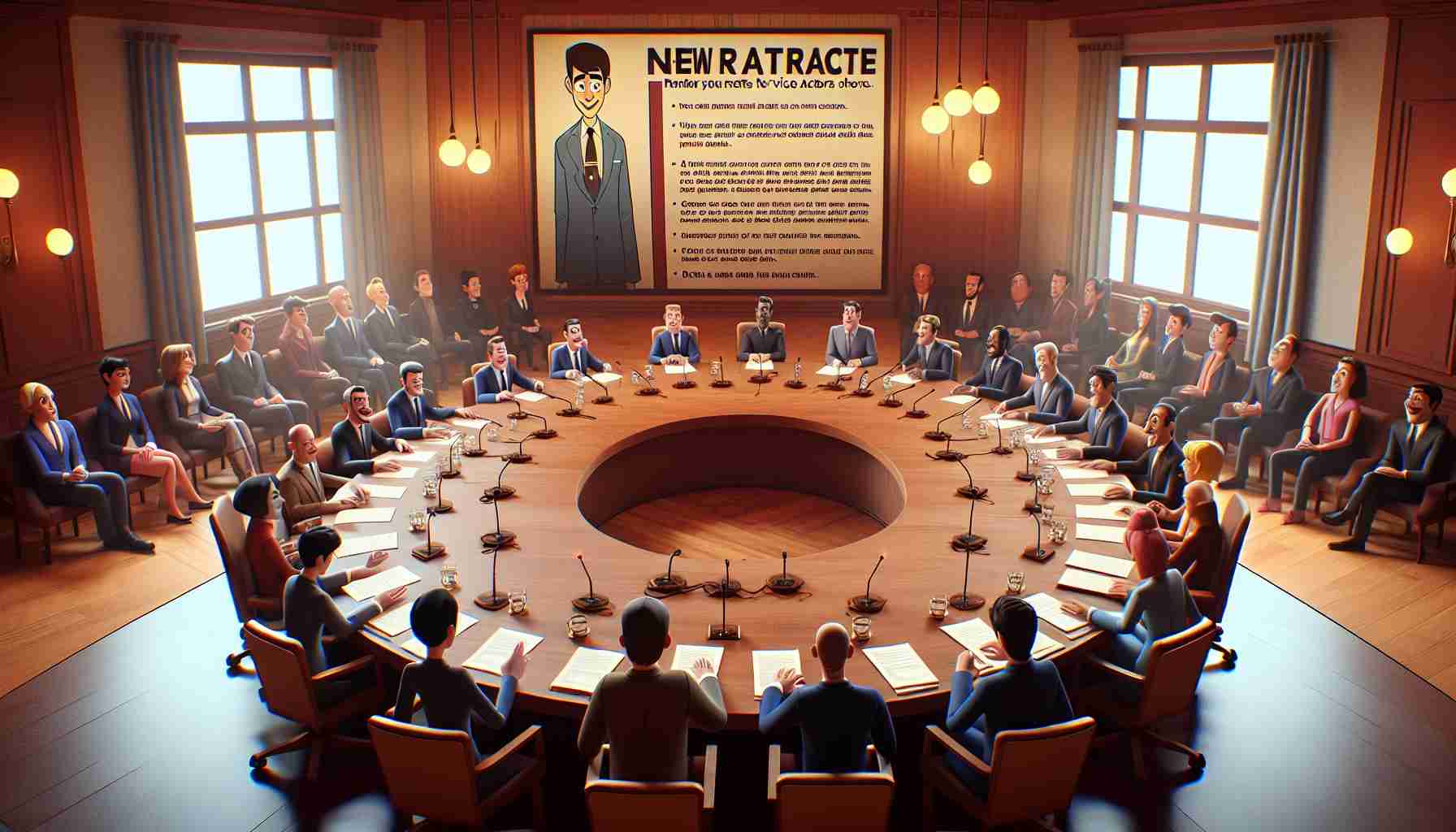SAG-AFTRA members have recently ratified new three-year contracts for voice actors working on animated TV shows, addressing concerns about artificial intelligence (AI) and its potential to replace their jobs. These deals, similar to the live-action agreement, do not prohibit the use of AI, but they ensure that actors’ voices cannot be replicated without their explicit permission.
One notable difference between the animation terms and the previous strike-ending deal lies in the definition of animation voice actors. SAG-AFTRA fought for the inclusion of a clause that explicitly states that animation voice actors must be human beings, a provision absent in the TV/Theatrical agreement.
SAG-AFTRA took to X, formerly known as Twitter, to announce their victory, stating, “‘Voice actors’ includes ONLY humans in the new TV Animation Agreements!” This definition had been a point of contention during the ratification process of the TV/Theatrical agreement, with executive director Duncan Crabtree-Ireland arguing that it would not effectively protect against AI misuse.
Instead, both the TV/Theatrical and animation agreements focus on consent and compensation for the use of “digital replicas” to recreate an actor’s voice. Studios are allowed to train AI models on past performances to create synthetic voices, as long as the result does not resemble a specific voice actor or their character. In these cases, studios are required to seek an actor’s consent and notify the union when creating synthetic voices. The union also has the right to argue for compensation for an actor’s contribution, even if the final voice does not sound like them.
In addition to addressing AI concerns, the new contracts follow many aspects of the TV/Theatrical agreement. They include 7% increases in scale wages, retroactive to July 1, with subsequent increases of 4% and 3.5% in the following years of the contract. The animation agreements also introduce a “success bonus” for the most-watched shows on streaming platforms.
FAQ
Q: What is SAG-AFTRA?
A: SAG-AFTRA is a labor union representing over 160,000 actors, broadcasters, and other media professionals in the United States.
Q: What concerns do voice actors have about artificial intelligence?
A: Voice actors are concerned that AI technology could potentially replace the need for human actors in animated TV shows.
Q: Can studios use AI to recreate actors’ voices without permission?
A: No, the new contracts stipulate that actors’ voices cannot be replicated without their explicit consent.
Q: Are there any limitations on using AI to create synthetic voices?
A: Yes, if the synthetic voice resembles a specific voice actor or their character, the studio must seek the actor’s consent and notify the union. The union can also argue for compensation, even if the final voice does not sound like the actor.
Q: What wage increases do the new contracts include?
A: The contracts include 7% increases in scale wages, retroactive to July 1, followed by increases of 4% and 3.5% in the subsequent years.
Q: What is the “success bonus” mentioned in the contracts?
A: The contracts introduce a “success bonus” for the most-watched shows on streaming platforms, although specific details about the bonus were not provided.
SAG-AFTRA, the labor union representing over 160,000 actors, broadcasters, and other media professionals in the United States, has recently ratified new three-year contracts for voice actors working on animated TV shows. These contracts aim to address concerns about artificial intelligence (AI) and its potential to replace human actors in their jobs.
The new agreements, similar to the live-action contract, do not prohibit the use of AI in animation but ensure that actors’ voices cannot be replicated without their explicit permission. This is an important provision as it recognizes the unique contribution and talent of human actors in the industry.
One significant difference between the animation terms and the previous strike-ending deal lies in the definition of animation voice actors. SAG-AFTRA fought for the inclusion of a clause that explicitly states that animation voice actors must be human beings, a provision absent in the TV/Theatrical agreement. This distinction shows the union’s commitment to protecting the jobs of human actors in animation specifically.
To address AI concerns, both the TV/Theatrical and animation agreements focus on consent and compensation for the use of “digital replicas” to recreate an actor’s voice. Studios are allowed to train AI models on past performances to create synthetic voices, as long as the result does not resemble a specific voice actor or their character. However, in these cases, studios are required to seek an actor’s consent and notify the union when creating synthetic voices. The union also has the right to argue for compensation for an actor’s contribution, even if the final voice does not sound like them.
These new contracts also include 7% increases in scale wages, retroactive to July 1, with subsequent increases of 4% and 3.5% in the following years of the contract. This is a significant development for voice actors, ensuring fair compensation for their work. Additionally, the animation agreements introduce a “success bonus” for the most-watched shows on streaming platforms, although specific details about the bonus were not provided.
The recognition of AI concerns and the inclusion of consent and compensation provisions in these contracts show the industry’s efforts to adapt to technological advancements while still valuing the contributions of human actors. These agreements provide a framework for protecting voice actors and ensuring fair compensation in the ever-evolving landscape of animation.
To learn more about SAG-AFTRA and its work, visit their official website by clicking here.
The source of the article is from the blog lisboatv.pt

